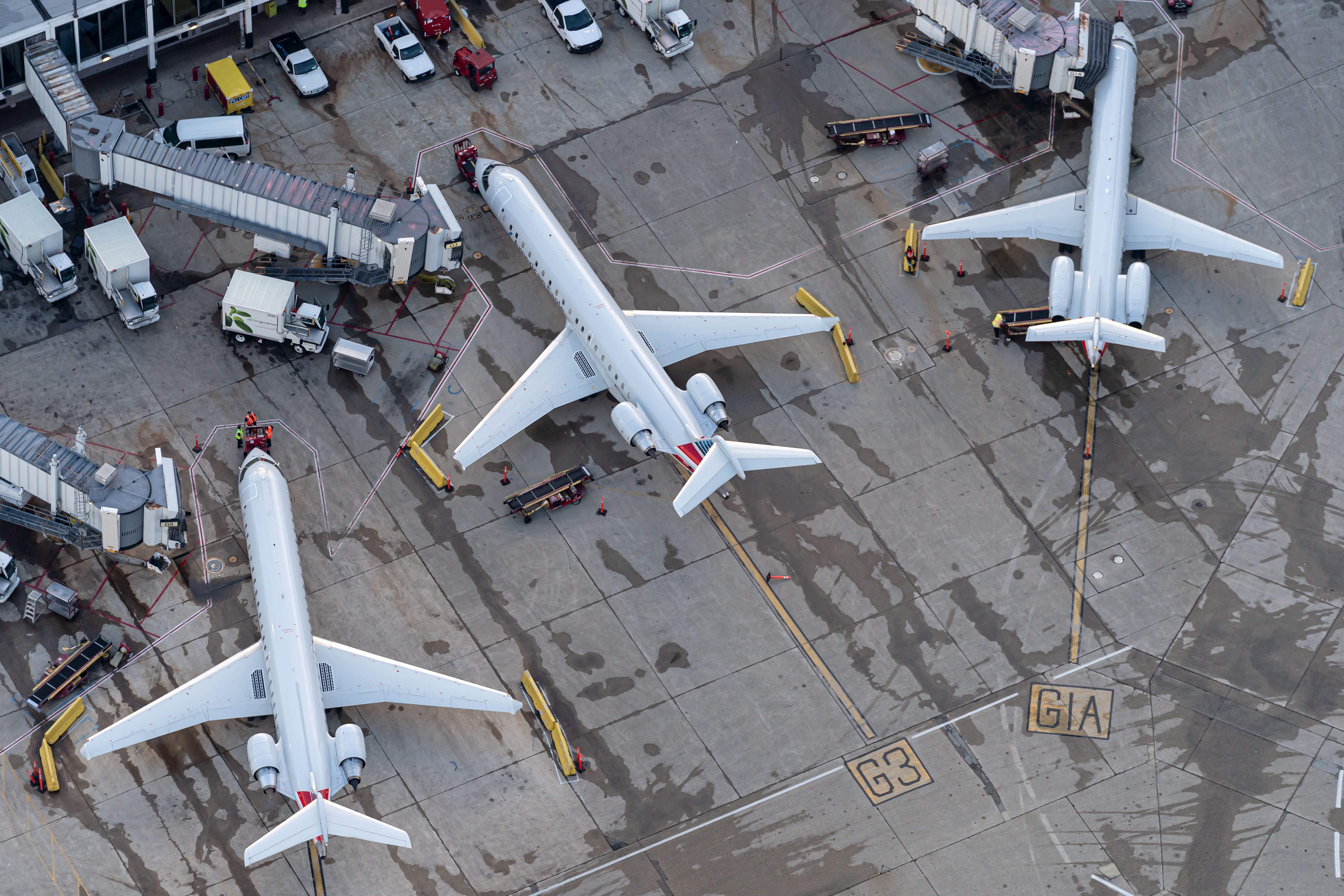Summary
- Pilots play a crucial role in the quick turn process by reloading the flight management system and conducting an external inspection, but the majority of the work is done by ground staff.
- Quick turns rely heavily on the teamwork of dispatchers, pilots, gate agents, flight attendants, and ramp staff, with ground staff deserving most of the credit for tasks completed in between flights.
A plane on the ground doesn't make an airline money. Airlines and their employees are tasked with minimizing ground time so that a plane can continue delivering passengers as expeditiously and efficiently as possible.
One of the most efficient methods for passenger carriage is the "turn" flight, or one in which the same crew brings the plane in, spends as little time on the ground as possible, and then takes off again (usually to the city they just arrived from). Let's talk about what pilots and their colleagues do in between flights during a turn.
Pilot tasks
The most time-consuming task for pilots after landing and before departing again is reloading the flight management system (referred to as the FMS or, more simply, "the box"). The FMS on most airliners requires re-initialization to accurately asses its GPS location. Pilots then load performance data, the route, and wind figures into the FMS.
This information generally comes from the flight plan that is generated by the airline's dispatchers. If there's any discrepancy in the route or fuel numbers, the captain can call the dispatcher via cell phone or ACARS to request an amendment to the flight plan.
The first officer conducts an external inspection (or walkaround) while the captain reviews the flight plan and begins loading the FMS. The walkaround is meant to ensure that no external damage occurred on the inbound flight. Everything from the brake wear indicators to hydraulic lines to the fan blades is checked for abnormalities.
If any discrepancies are noted, it's reported to maintenance as soon as possible with the hopes that a fix can be completed in time for the scheduled departure. When the first officer returns to the flight deck, the pilots review their route and condiuct a pre-departure briefing.
Maintenance write-ups that occur in flight and don't require a diversion (this is the majority of cases) are reported to the company via ACARS. This is done to give maintenance a head-start on the issue and have them ready at the gate when the plane arrives.
It's the captain's responsibility to "write up" the issue in the aircraft technical logbook and present it to the mechanic. The plane can't legally depart until the write-up has been corrected and signed off by a licensed mechanic.
The role of non-pilots
Though most airlines have operated quick-turn flights for decades, Southwest Airlines is the most famous in the US for this type of operation. From the 1980s into the mid-2000s, Southwest was able to turn legacy Boeing 737 variants (usually about 130 passengers) in 30 minutes or less. There are behind-the-scenes videos available online in response to a YouTube query on the topic.
What these behind-the-scenes videos show is that quick turns depend much more heavily on the work of ramp and ground staff than they do on the pilots. In reality, experienced pilots can land and reconfigure an airliner for departure in under 10 minutes. Deboarding, offloading and on loading bags and cargo, catering, providing lavatory service, and refueling consume the majority of the time on a turn.
Most of these things are done simultaneously, but it's the passenger boarding processes that take the lion's share of the turn time. With this in mind, it's gate agents, flight attendants, and ramp staff who deserve most of the credit for successful quick turns rather than the pilots.
Turning a plane around is a team effort. Dispatchers thousands of miles away generate the flight plan, and pilots load it and make sure the plane is technically ready for further flight. Meanwhile, gate agents check bags, board new passengers, and rebook delayed itineraries while rampers load bags and cargo. Pilots make up a small part of the operation. Especially in the heat of the summer of freezing cold of the winter, it's the ground staff who deserve a lot of the credit for tasks completed in between flights.



